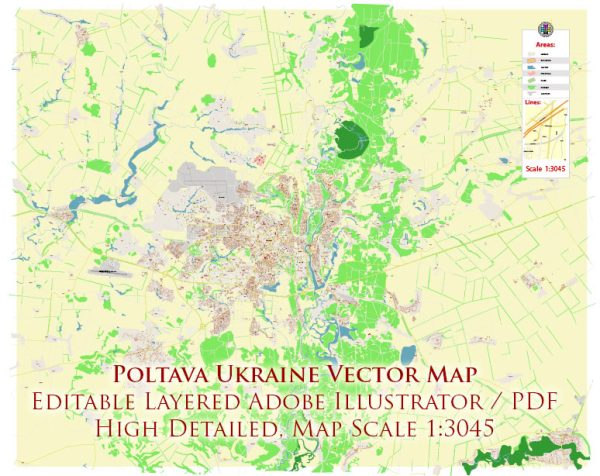Poltava, located in central Ukraine, has a rich history that significantly influenced its urban development. Here is a brief overview of the historical urban development of Poltava:
- Foundation and Early History (17th Century):
- Poltava was founded in 899 AD, but it gained prominence in the 17th century when it became a key fortress of the Tsardom of Russia. It played a strategic role in the defense against the Crimean Tatars and other nomadic peoples.
- Battle of Poltava (1709):
- The Battle of Poltava, fought in 1709 during the Great Northern War, was a turning point in the city’s history. The Russian army, led by Tsar Peter the Great, defeated the Swedish forces, securing Russian dominance in the region.
- Imperial Russia Era (18th Century):
- After the battle, Poltava continued to grow as an important administrative and military center in the Russian Empire. The city saw the construction of various government buildings, churches, and residential areas.
- 19th Century:
- During the 19th century, Poltava continued to develop economically and culturally. The city’s architecture reflected the prevailing styles of the time, with neoclassical and eclectic influences seen in public buildings and private residences.
- Soviet Era (20th Century):
- The 20th century brought significant changes to Poltava as Ukraine went through periods of political upheaval. During the Soviet era, the city experienced industrialization, and new residential areas were established to accommodate the growing population.
- World War II and Post-War Reconstruction:
- Like many cities in Ukraine, Poltava suffered during World War II. The city was occupied by the Germans, and significant destruction occurred. After the war, efforts were made to rebuild and reconstruct the city, with an emphasis on restoring infrastructure and housing.
- Post-Soviet Period (1991 onward):
- With the dissolution of the Soviet Union in 1991, Ukraine gained independence. Poltava, like other Ukrainian cities, underwent changes in governance and faced the challenges of transitioning to a market economy.
- Contemporary Urban Development:
- In recent years, Poltava has focused on modernizing its infrastructure and urban spaces. Efforts have been made to preserve historical buildings while also promoting contemporary architectural styles. The city has seen improvements in transportation, education, and cultural facilities.
- Cultural and Educational Hub:
- Poltava has a rich cultural heritage, with museums, theaters, and educational institutions contributing to its vibrancy. The city’s historical sites, including the Field of Poltava Battle, attract tourists interested in Ukrainian history.
Overall, Poltava’s urban development reflects its role in key historical events, from being a fortress in the Russian Empire to its present status as a cultural and economic center in independent Ukraine. The city’s architecture and layout showcase a blend of historical and modern influences, making it a unique and dynamic urban environment.


 Author: Kirill Shrayber, Ph.D.
Author: Kirill Shrayber, Ph.D.